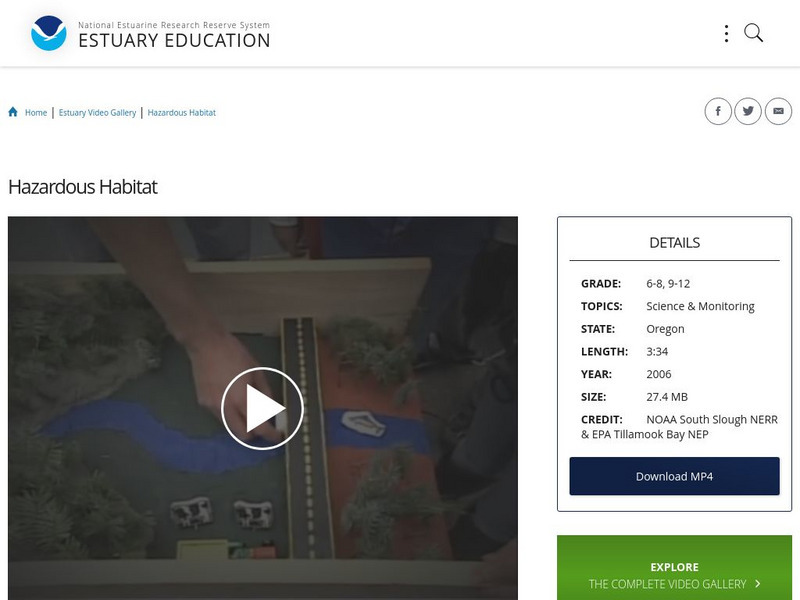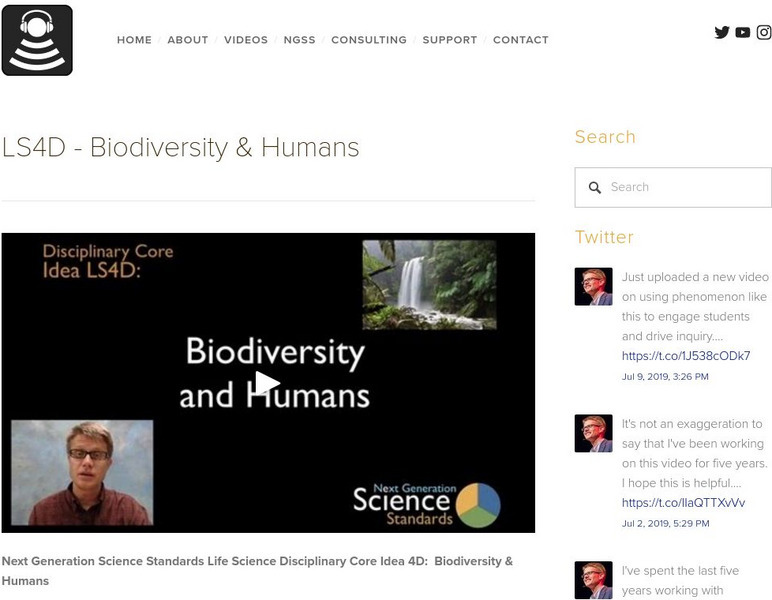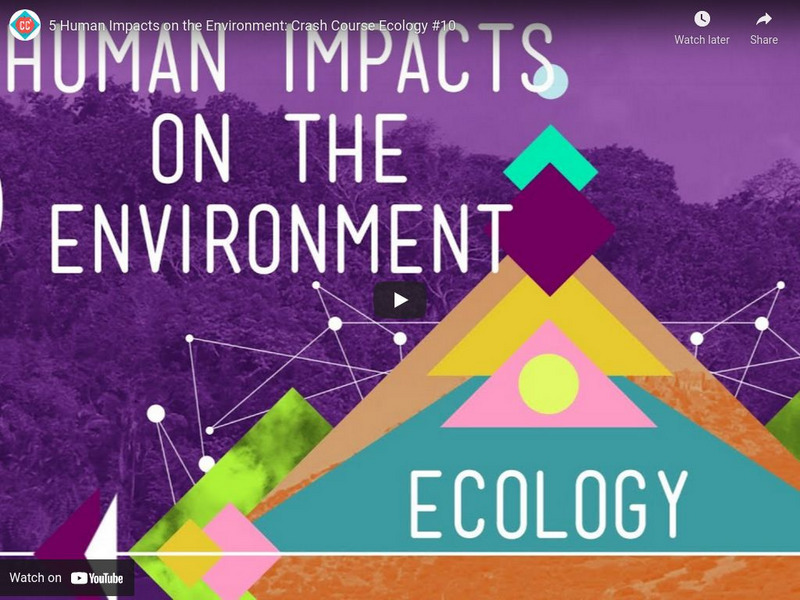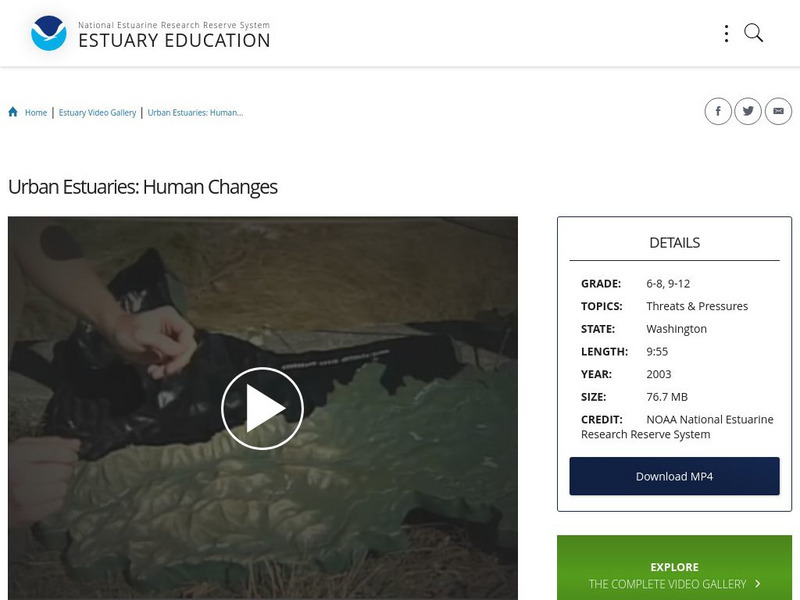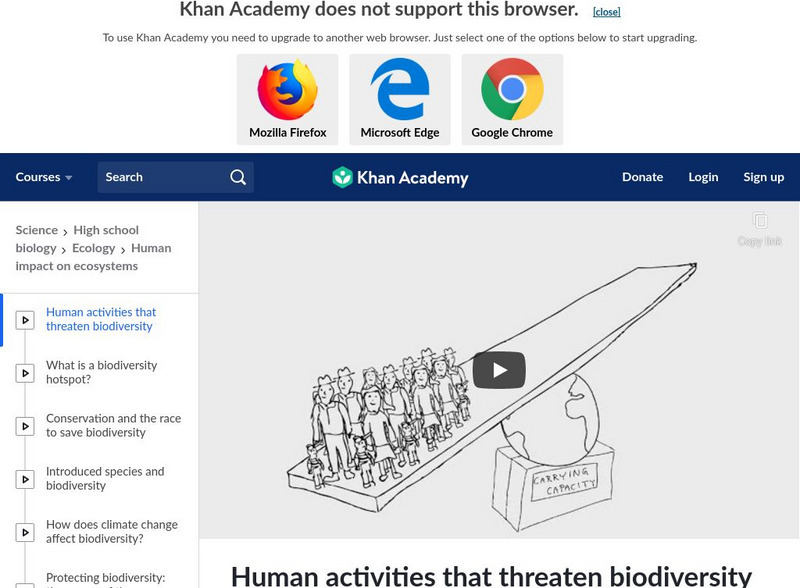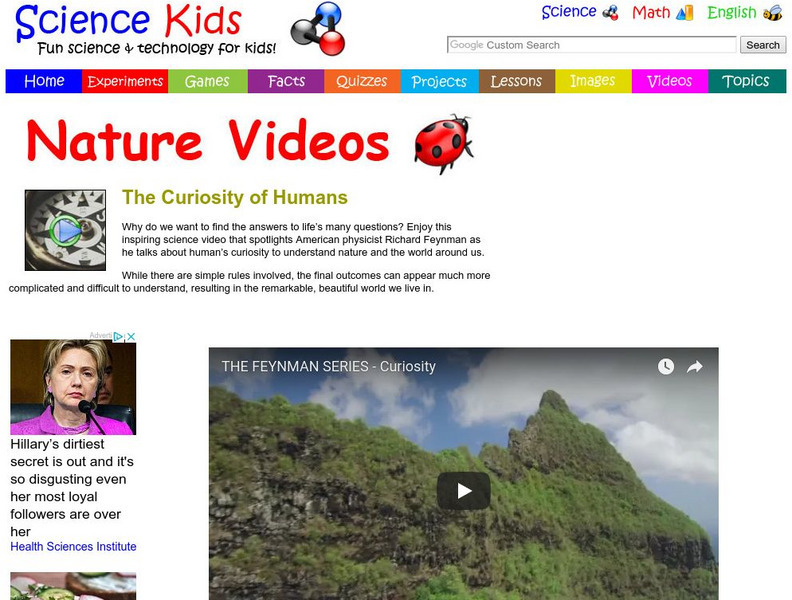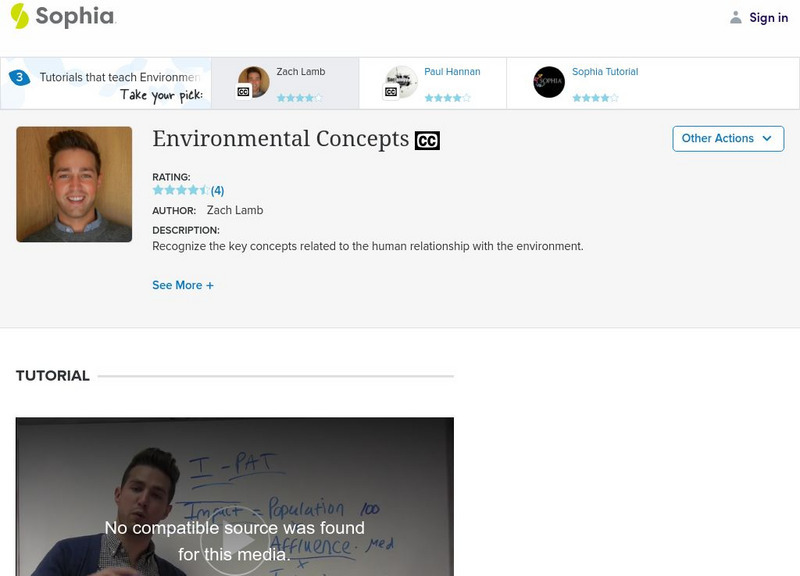Hi, what do you want to do?
Crash Course
Crash Course Kids 38.2: Big Changes in the Big Forest
In this Crash Course episode, learn how humans change their environments simply by living in them. [4:38]
NOAA
Noaa: Estuary Education: Urban Estuaries: Living in a Toxic Soup
Urban areas often expand around estuaries. Industrial development often leaves a legacy of pollution in these areas. This video looks at what kind of long-term pollution is found in the Duwamish estuary in Seattle, and how estuary life...
NOAA
Noaa: Estuary Education: Hazardous Habitat
Estuaries are important habitats for salmon, but development, deforestation, and human interaction have caused damage to these ecosystems. Learn how to mitigate this damage and restore the estuary. [3:32]
Bozeman Science
Bozeman Science: Biodiversity & Humans
In this video, Paul Andersen defines biodiversity and explains the impacts humans are having on the planet's biodiversity. Humans are impacting the variety of life on our planet through habitat destruction, invasive species, pollution,...
Crash Course
Crash Course Ecology #10: 5 Human Impacts on the Environment
Hank gives the run down on the top five ways humans are negatively impacting the environment and having detrimental effects on the valuable ecosystem services which a healthy biosphere provides. [10:38]
NOAA
Noaa: Estuary Education: Urban Estuaries: Human Changes
Often humans living in close contact with an estuary want to fix it. We learn about the changes humans made to the Duwamish Estuary in Seattle. and how many groups are seeking to reverse these changes. [9:55]
PBS
Pbs Learning Media: Oil Contamination Affects Food Web
This video adapted from KTOO explores the impact of oil contamination on the herring population of Prince William Sound, Alaska, in 1999, 10 years after the Exxon Valdez oil spill.3m 03s
PBS
Pbs Learning Media: Bullfrog Films: Gwich'in Tribe Protects Caribou and Culture
Gwich'in Chief Evon Peter of Arctic Village, Alaska explains the importance of the caribou to his people and the tribes need to protect the herd from the effects of oil drilling. [5:43]
PBS
Pbs Learning Media: Steve Mac Lean: Conservationist
In this video profile produced for Teachers' Domain, meet conservationist Steve MacLean, an Inupiaq from Barrow, Alaska, who works to preserve the health of the Bering Sea ecosystem. Site includes short essay, discussion questions,...
PBS
Pbs Learning Media: Ruff Ruffman: An Orange Dog Goes Green
Learn about being environmentally friendly with the help of technology, and the much-loved character Ruff Ruffman. [2 min, 44 sec]
PBS
Pbs Learning Media: Ruff Ruffman: Ask Ruff: The Green Edition
Hear advice from the much-loved character Ruff Ruffman on how to use media and technology to help the environment. [2:37]
Khan Academy
Khan Academy: Ecology: Human Activities That Threaten Biodiversity
Learn about the human activities that cause a loss of biodiversity. [12:51]
Khan Academy
Khan Academy: 5 Human Impacts on the Environment
In this Crash Course video, understand how the ecosystems is affected by human activity. [9:59]
Crash Course
Crash Course Kids 38.1: Big Changes in the Big Apple
Find out how humans have been changing our environments for a long time. [4:56]
Science for Kids
Science Kids: Nature Videos: The Curiosity of Humans
This video highlights human's curiosity with nature and explorin our environment. [4:24]
Sophia Learning
Sophia: Environmental Concepts: Lesson 2
This lesson will define ecology, natural environment, ecosystem, and environmental deficit, while delineating the formula for calculating human impact on the environment. It is 2 of 3 in the series titled "Environmental Concepts."
Other
Story of Stuff Project: Story of Bottled Water
This video presents an argument for not using bottled water. Learn about the consequences that come from using the bottles for our environment. Also discussed is a comparison between tap and bottled water nutrients and taste. [8:04]







